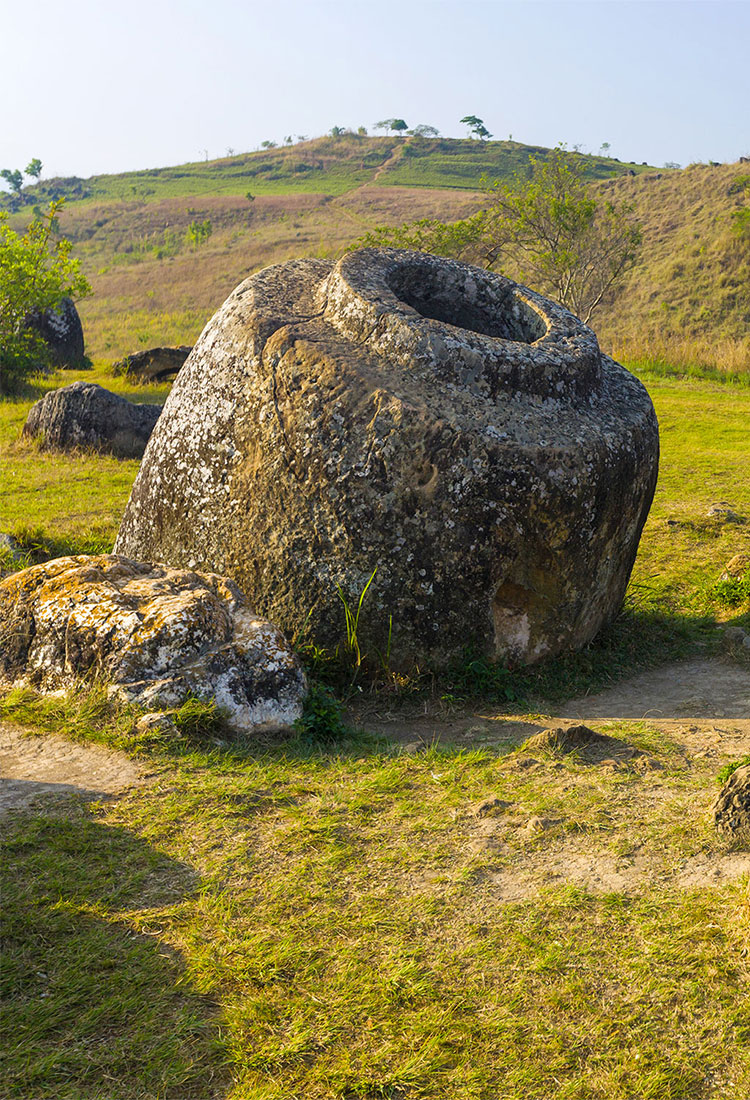Whether naturally occurring or human-made, some phenomena on Earth are so perplexing that they leave even scientists scratching their hands. From strange lights that illuminate the night sky to creatures thriving under confounding circumstances and fields of giant, perfectly round stone spheres, take a mind-binding journey to eight places with mysterious phenomena.
Eternal Flame Falls – New York
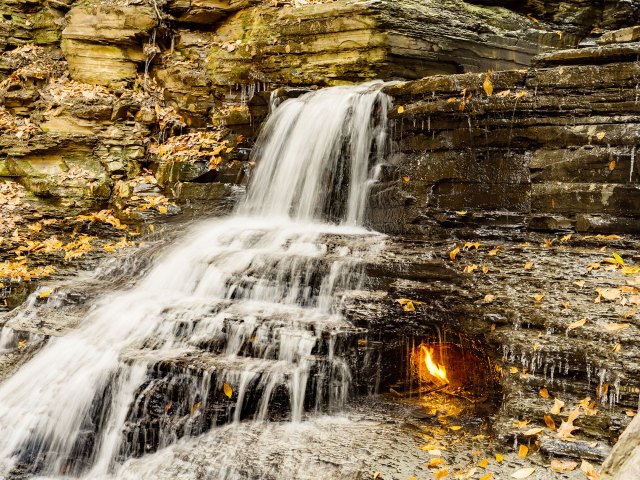
Everyone knows that fire and water don’t mix, but one particularly mysterious place in western New York seems to prove otherwise. Eternal Flame Falls in the Shale Creek Preserve baffles geologists with its juxtaposition of fire and water. Visitors to the 35-foot waterfall can peer beyond the falls to a small, flickering flame hidden in the caves behind the water. Scientists initially believed that, as was the case with other “eternal flames,” hot rocks releasing natural gas deposits from under the ground started the fire. Researchers from Indiana University, however, found that the rock under the waterfall wasn’t hot enough to form the necessary pockets of natural gas to keep the flame burning.
So, what’s keeping the eternal flame flickering behind the falls? No one has a scientific explanation for it, but legend gives credit to local Native American tribes, claiming they lit the flame thousands of years ago. Geologists still hope to identify the cause in the future and unlock the fiery secrets of this mysterious place. In the meantime, you can see the watery flame for yourself by taking a half-mile hike to the falls inside Chestnut Ridge County Park.
Plain of Jars – Laos
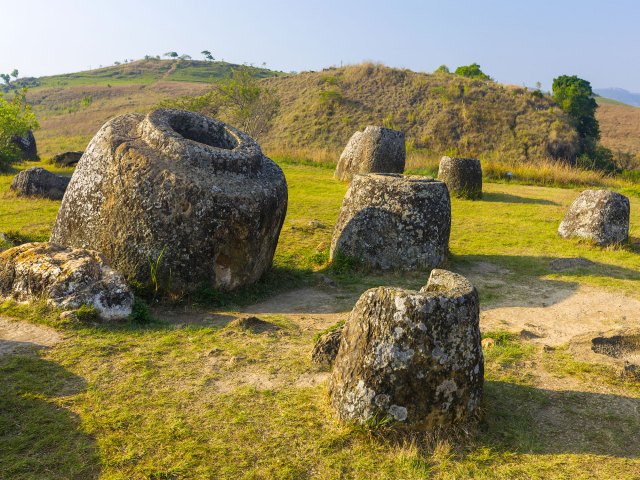
Few visitors find their way to the remote plains of Xiangkhoang Plateau in Laos. But if you do venture into this arid region of Southeast Asia, you’ll find thousands of enormous, ancient stone jars dotting the landscape. They sit scattered across the land like a giant’s forgotten crockery. The urns date back to the Iron Age, when their makers used a combination of clay, dung, sandstone, and sugar to create them before baking them in huge kilns. Some jars also have artful reliefs carved into them, showing off the skill of the creator.
What’s most baffling about the jars, though, is how they got to the plateau in the first place. Some of the giant jars weigh as much as 10 tons and measure nearly 10 feet tall. So how were the jars transported to the empty landscape from the quarry, which is more than six miles away? Scientists can only speculate about their purpose. One group of archaeologists believes the jars may have been giant urns commemorating the dead. There are other theories and legends too, but unexploded bombs in the area pose a threat to those seeking to reveal the mystery of the jars. As a result, the Plain of Jars — which became a UNESCO World Heritage Site in 2019 — remains, for the most part, an archaeological mystery.
Cave of Crystals – Mexico
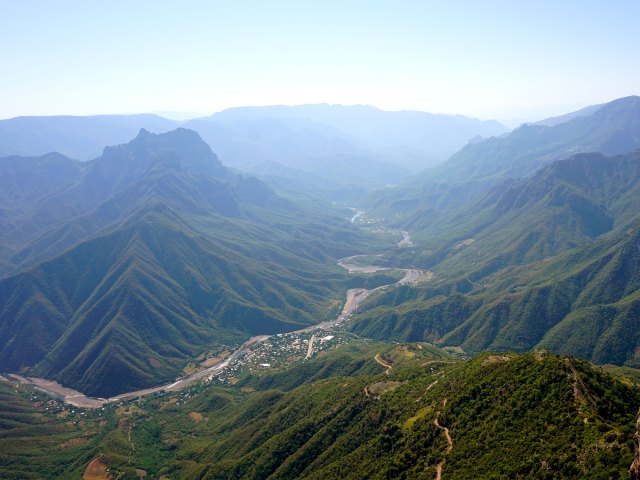
Buried beneath the mountains near Naica, Mexico, is a magical place that might remind you of a science-fiction movie. Back in 2000, two miners accidentally stumbled upon the Cave of Crystals. What they found immediately intrigued the world. It’s a beautiful but mind-boggling discovery that continues to draw scientists from all parts of the globe.
White crystals that measure nearly 39 feet long and three feet wide fill the subterranean space. The crystal formations, which formed thanks to a process called nucleation, jut out from every angle in the horseshoe-shaped cave. But while scientists can confidently point to the mineral-rich waters inside the cave as the reason the crystals grew in the first place, they can’t explain their massive size. Most crystal structures don’t grow to the enormous dimensions of the ones found in the Naica cave. In fact, even crystals in neighboring caves started by the same mineral water don’t grow to nearly the same scale. The giant crystals also continue to grow, although the growth rate is incredibly slow.
Stone Spheres – Costa Rica
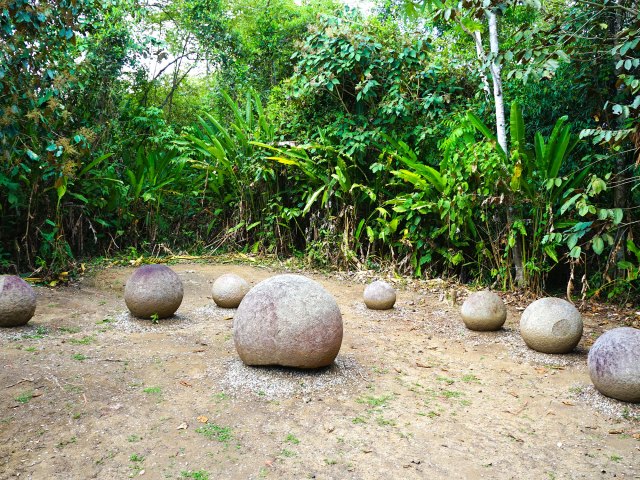
When the United Fruit Company in Costa Rica sought new ground to plant banana trees in the early 1930s, they came across a group of curious stone spheres. The almost perfectly round rocks were like nothing they had seen before. While the stones varied in size, the largest of them measured over six feet in diameter. The workers for the fruit company rolled the strange orbs out of the way and went ahead with planting the new banana trees.
Years later, archaeologists began to study the spheres in an attempt to determine their origin. They’ve found hundreds of the gabbro-formed balls since the workers first stumbled across them, and they now believe that the mysteriously smooth rocks were handmade by the pre-Columbian cultures of Costa Rica. The reason for the spheres, however, remains an unanswered question. Some theories speculate that tribal leaders commissioned them to display their group’s crafting skills. Others suggest they were a symbol of wealth in the village.
Fairy Circles – Namibia
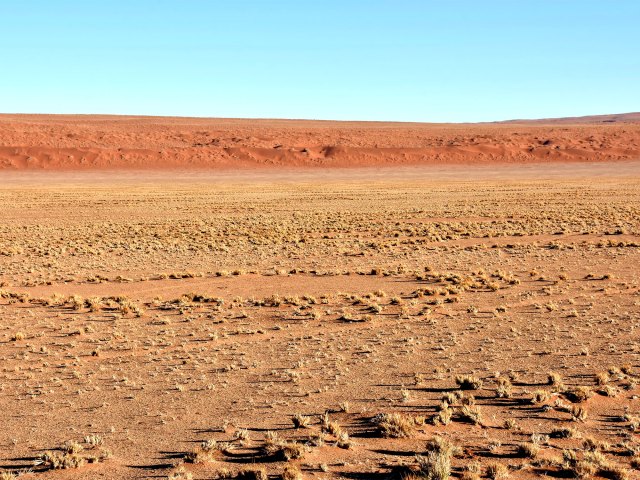
In the grasslands of southern Africa’s Namib Desert, a series of unexplained “fairy circles” have baffled scientists for years. Short grasses ring the barren, circular patches, which range from 10 to 65 feet in diameter. Thousands of these mysterious rings stretch out over hundreds of miles of desert. So, what caused these mysterious circles in the sand? Namibian legend says the gods created them by carelessly leaving their giant footprints in the red dirt. Take a look at the fairy circles on satellite imagery and you may start to think the idea makes sense.
Scientists, of course, beg to differ. But while they dismiss the local legend, they can’t seem to agree on a reasonable explanation either. Some say termites formed the fairy circles by clearing the vegetation around their underground habitat in order to create natural rainwater reservoirs. Others believe plants caused the circles by competing for much-needed water. There’s even one group of scientists who believe both theories are right. What they can’t explain, though, is why the pattern of the circles is so regular — the rings appear in an evenly spaced arrangement. The mystery (and the legend) remain.
Hessdalen Lights – Norway
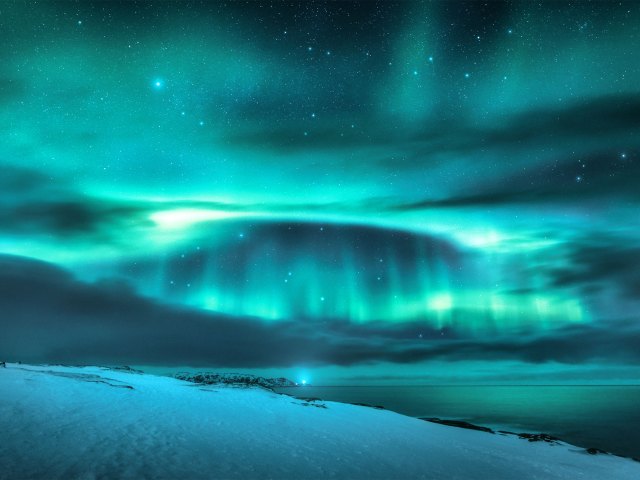
Something weird is happening in the sky above the small, central Norwegian town of Hessdalen. People have witnessed hundreds of strange lights where only stars should be. The lights randomly illuminate the night sky and sometimes appear as big as a car, remaining for as long as a few hours. The strange phenomenon was first reported in the early 20th century, but it reached a peak of activity in the 1980s. That’s when UFO hunters took notice and flocked to the area in search of the mysterious lights. They weren’t disappointed. During the early part of the decade, the lights would appear up to 20 times a week.
The unusual lights still blaze in the night sky, though with less frequency now than when they first appeared. But what caused them in the first place? Scientists have many viable explanations, including the presence of cosmic rays or piezoelectricity. Other researchers attribute them to ball lightning or ionized gasses. All of the theories fall short of a satisfying and proven explanation though.
Patom Crater – Russia
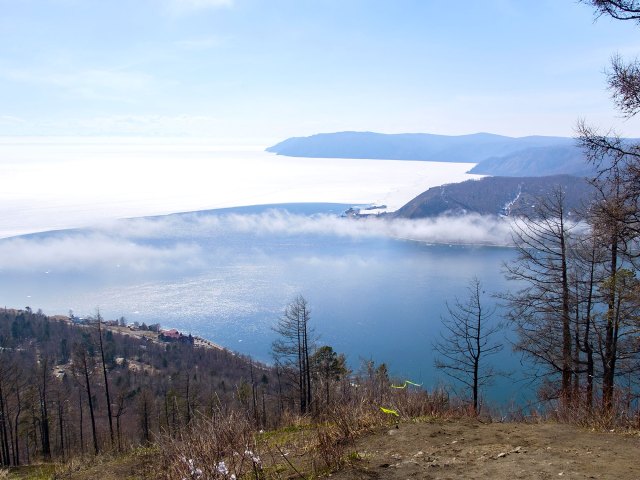
Patom Crater is a 131-foot-high geological formation in Siberia that looks a bit like a bird’s nest with an egg nestled inside. Scientists originally suggested that a meteor strike caused the unusual formation, but a lack of meteorite fragments in the area brought them back to the drawing board for another explanation. At one time, they discussed the possibility of a UFO landing, but that idea was discarded too. There are even theories that the crater was built by prisoners in a secret prison camp, and some geologists have hypothesized that the uncommon formation came from under the earth rather than above it. This theory involves a magma explosion caused from steam from beneath the surface.
However it formed, there’s no disputing that it’s a strange area. No trees grow on the crater, even though the surrounding landscape is dense forest. There are also reports of curious things happening in the vicinity of the crater. But since no one can prove what created the formation, Patom Crater remains one of Russia’s greatest mysteries.
Nazca Lines – Peru
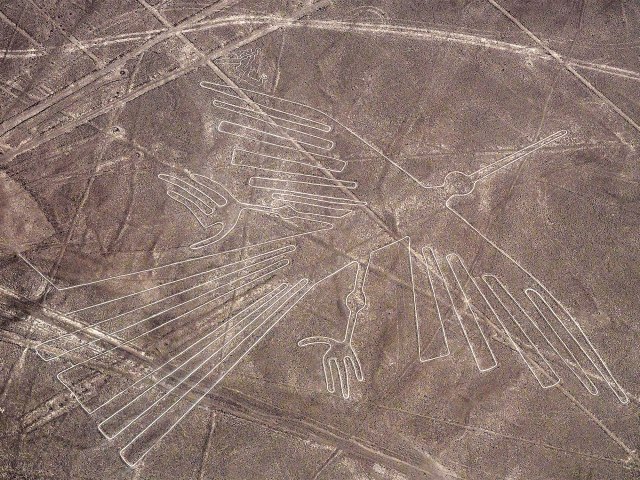
From the sky, they look like animals and people carefully drawn by a child. But the Nazca Lines of Peru are sprawling artistic representations covering at least 170 square miles of arid, coastal land. The ancient geoglyphs date back as far as 500 BCE, when researchers believe the artists removed the top layer of black stone on the ground to reveal the white sand underneath. The contrast in colors makes the lines easy to view from the air.
More from our network
Daily Passport is part of Optimism, which publishes content that uplifts, informs, and inspires.






